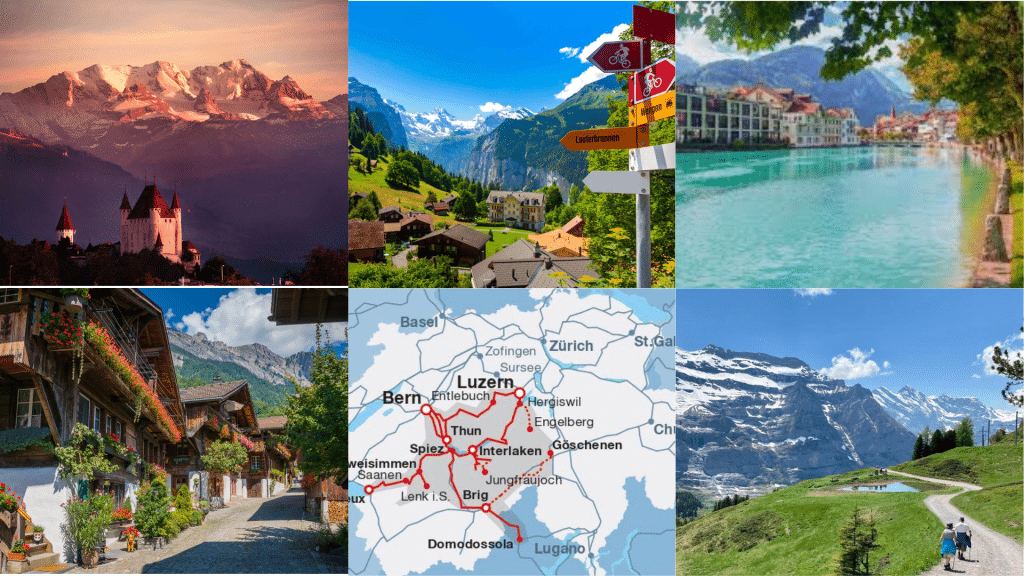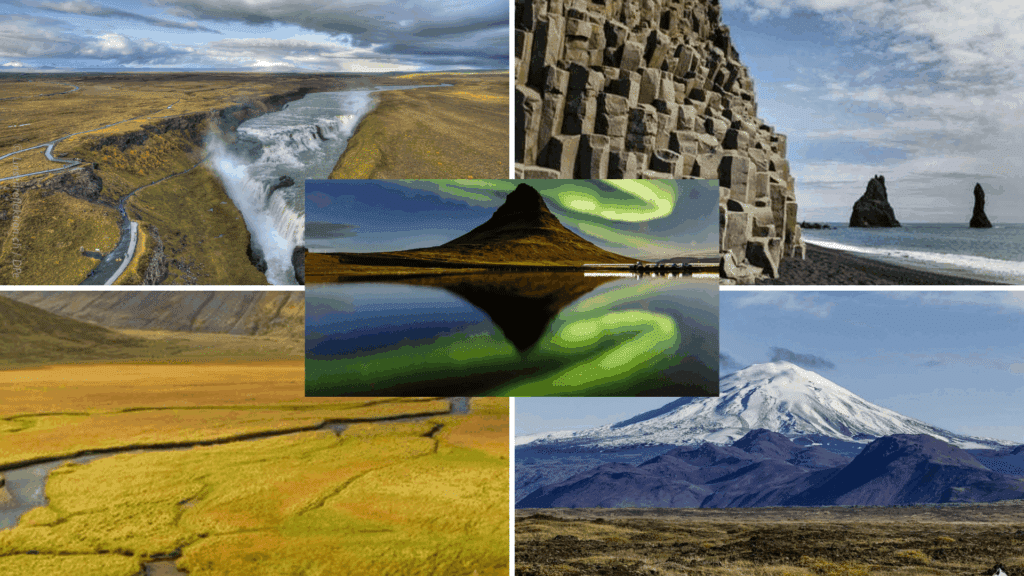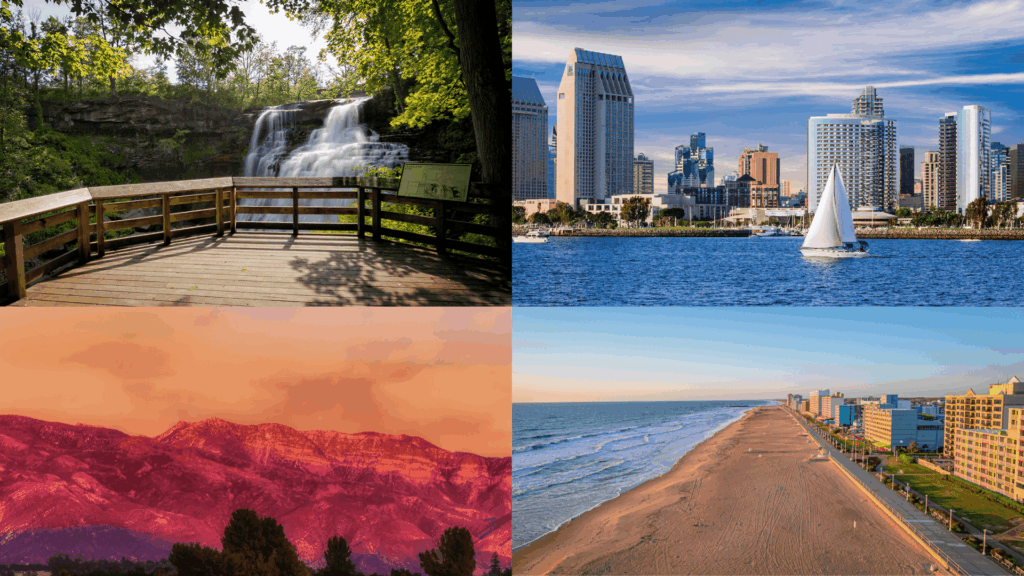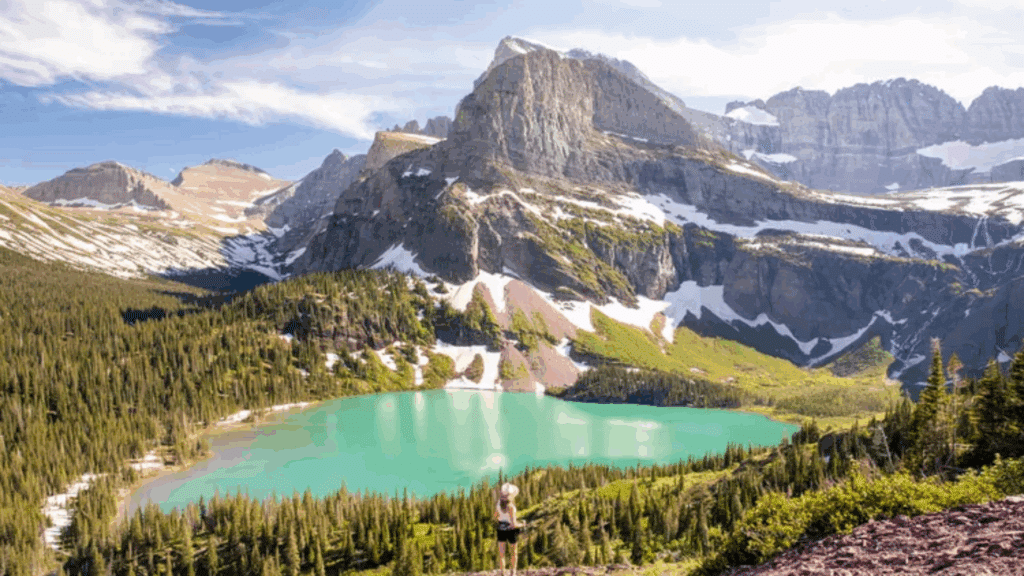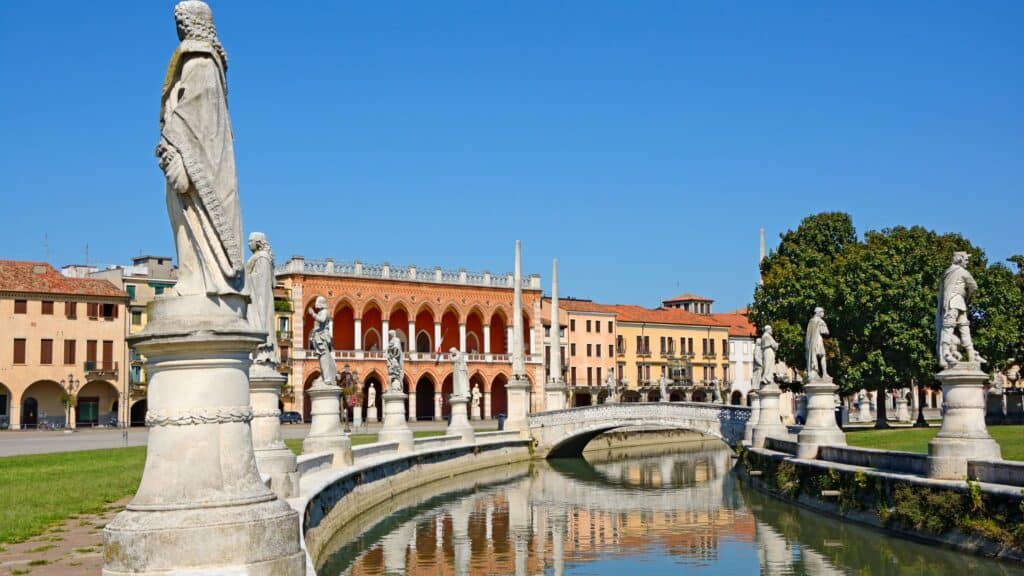The Bernese Oberland is a beautiful region in Switzerland, known for its striking landscapes and rich history.
Located in the heart of the Swiss Alps, it is home to iconic peaks like the Eiger, Mönch, and Jungfrau.
This area attracts visitors for outdoor activities and interests those who study its cultural significance.
The Bernese Oberland reflects Switzerland’s natural scenery and historical heritage.
Whether you enjoy hiking, skiing, or visiting charming villages, this region provides a memorable visit for people of all ages.
Geography of the Bernese Oberland
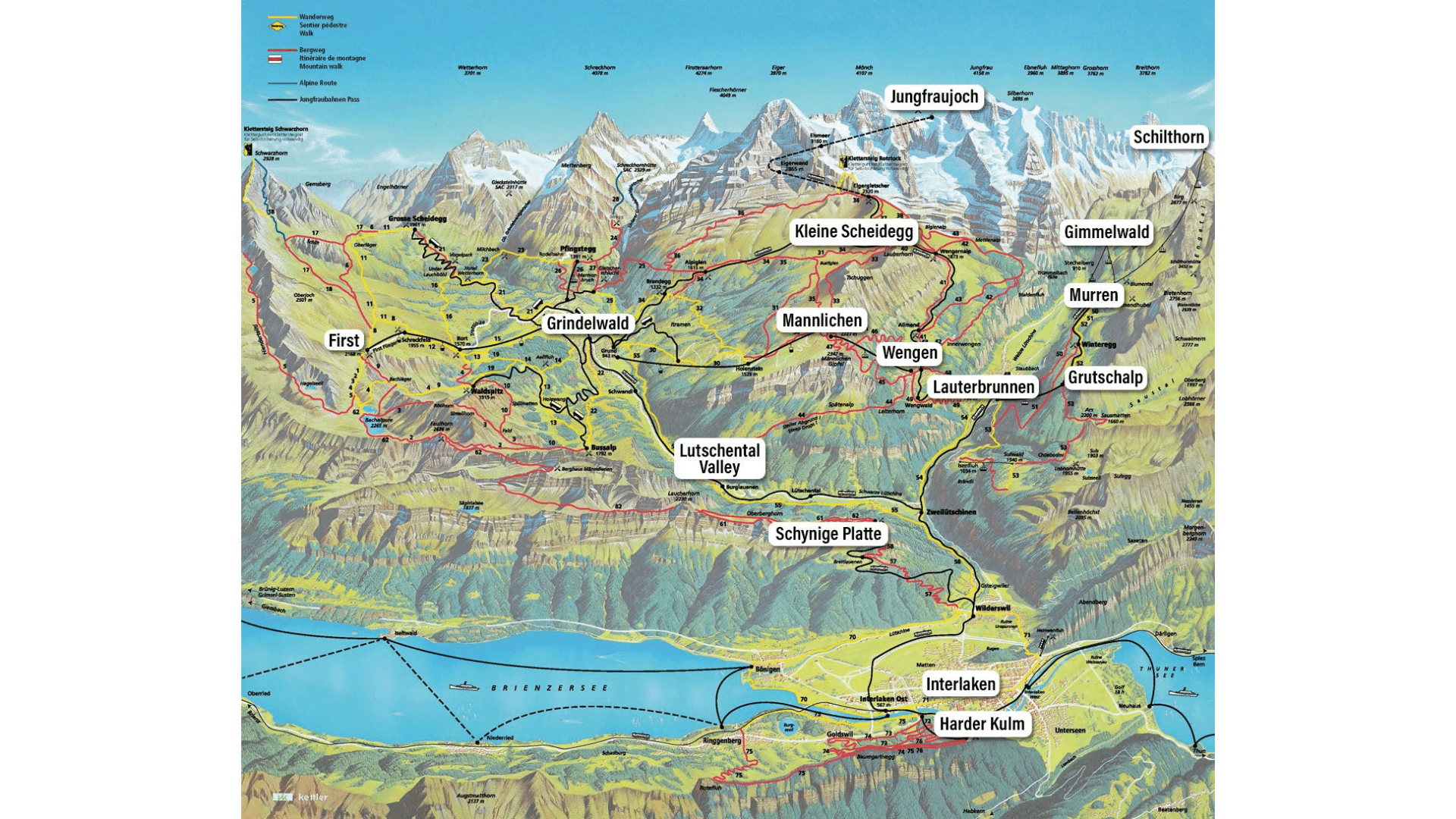
SOURCE: Earth Trekkers
The geography of the Bernese Oberland is a breathtaking blend of towering peaks, lush valleys, and crystal-clear lakes, making it one of Switzerland’s most stunning and diverse regions.
1. Location
The Bernese Oberland lies in central Switzerland, within the heart of the Swiss Alps.
It is primarily situated in the Canton of Bern and extends from the Aare River in the north to the towering Jungfrau massif in the south.
This region’s strategic central location connects travelers to both Switzerland’s interior and neighboring countries.
Key Features:
- Geographical Position: Nestled in the Swiss Alps, primarily in the Canton of Bern.
- Northern and Southern Boundaries: Spans from the Aare River in the north to the Jungfrau massif in the south.
- Diverse Landscapes: Offers a vast and varied landscape of mountains, lakes, and valleys.
- Gateway to Switzerland: Acts as a gateway to other Swiss regions and neighboring countries like Italy and France.
Tip: If you’re traveling through the Bernese Oberland, consider staying in a village near Lake Thun or Lake Brienz for picturesque views and easy access to both mountains and lakes.
2. Mountain Ranges
The Bernese Oberland is renowned for its majestic peaks, including the Eiger, Mönch, and Jungfrau.
These mountains rise high above the valleys and are known for their striking beauty and mountaineering challenges.
The region is a popular destination for travelers, offering climbing opportunities and high-level alpine experiences.
Key Features:
- Famous Mountains: Dominated by the well-known peaks of Eiger, Mönch, and Jungfrau.
- Challenging Climb: Eiger’s north face is one of the most difficult climbs in the world.
- UNESCO World Heritage: Mönch and Jungfrau are part of the UNESCO World Heritage site of the Jungfrau-Aletsch-Bietschhorn.
- Jungfraujoch: The Jungfrau is a prominent tourist location, offering wide mountain views and access to glaciers at Jungfraujoch.
Tip: If you’re not a climber but still want to enjoy the scenery, take the Jungfrau Railway to Jungfraujoch, the highest railway station in Europe.
3. Lakes and Valleys
The region is also home to stunning lakes and valleys that provide a contrast to the towering mountains.
Lakes such as Lake Thun and Lake Brienz are perfect for water activities, while valleys like Grindelwald and Lauterbrunnen are known for their natural beauty and outdoor recreation opportunities.
Key Features:
- Scenic Lakes: Lake Thun and Lake Brienz offer clear, blue waters and scenic views, ideal for boating and hiking.
- Waterfalls and Cliffs: The Lauterbrunnen valley features dramatic cliffs and 72 waterfalls, making it one of the most picturesque spots in Europe.
- Outdoor Adventure: Grindelwald is a popular base for outdoor activities, offering hiking trails and alpine skiing.
- Traditional Villages: Traditional Swiss villages nestled in the valleys retain their charm, with alpine landscapes that are perfect for sightseeing.
Tip: Take a boat ride on Lake Thun or Lake Brienz to enjoy the stunning views of the mountains from the water an experience you won’t forget!
4. Climate
The Bernese Oberland experiences a varied climate due to its diverse topography.
The lower valleys enjoy mild, temperate weather, making them ideal for summer activities.
In contrast, the higher peaks maintain cold temperatures, with snow present year-round, making the region a sought-after destination for both summer and winter sports.
Key Features:
- Mild Valleys: The lower valleys experience a mild, temperate climate, great for hiking, cycling, and sightseeing.
- Snowy Peaks: The higher elevations, including Jungfrau, have cold, snowy weather year-round, making it perfect for skiing and snowboarding.
- Year-Round Tourism: The diverse climate offers year-round tourism, with warm summers for lake activities and cold winters for snow sports.
- Ecological Diversity: The varied weather supports rich flora and fauna, adding to the region’s ecological and aesthetic value.
Tip: Pack layers when visiting the Bernese Oberland, as the temperature can vary drastically between the valleys and mountain peaks, especially if you’re traveling across different elevations.
History of the Bernese Oberland
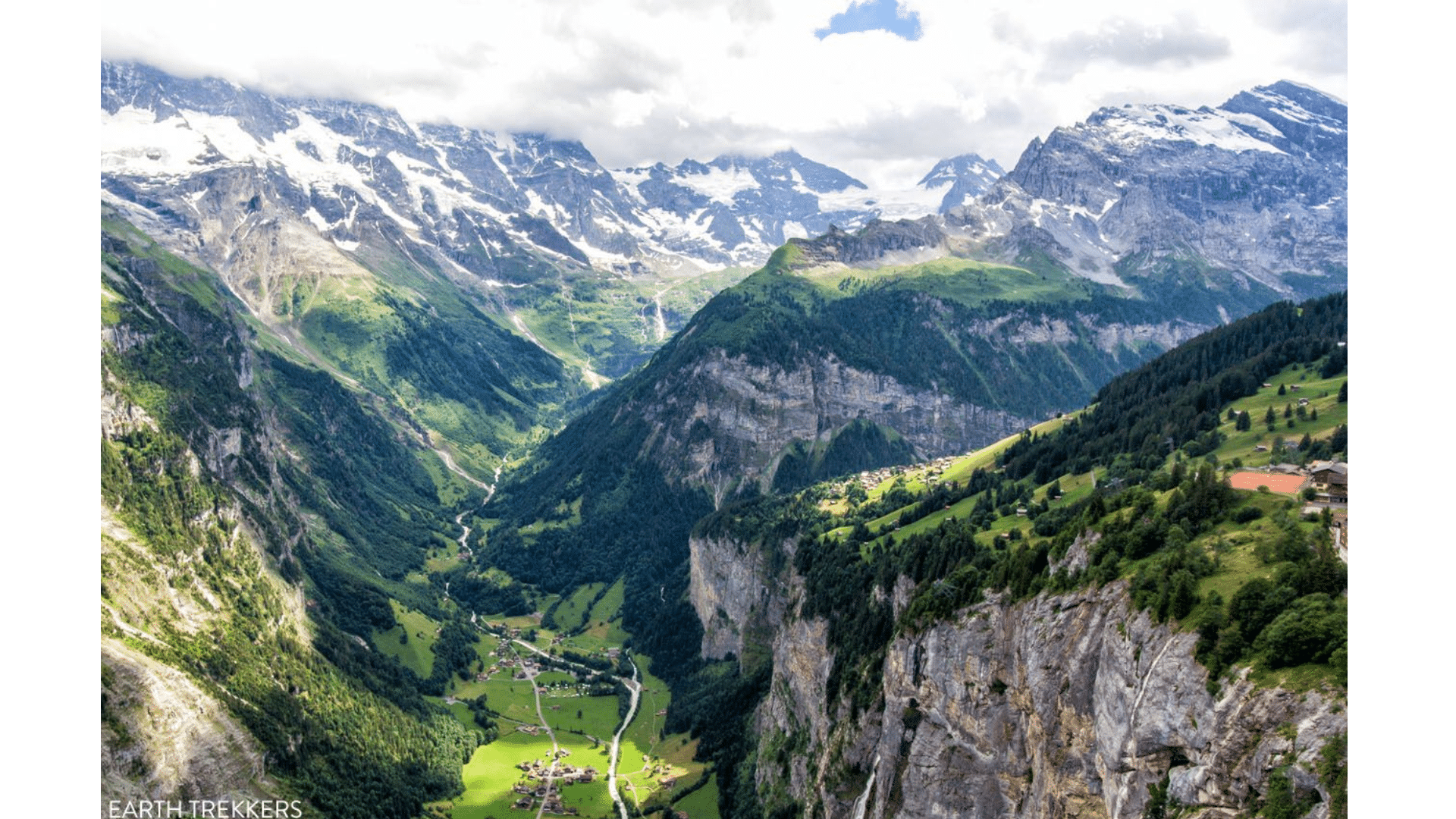
SOURCE: Earth Trekkers
The Bernese Oberland is a region steeped in rich history, from early human settlements to its role in shaping Swiss culture and heritage.
Its location within the Swiss Alps has made it an important area for trade, military routes, and cultural exchanges over the centuries.
The region’s history is intertwined with Switzerland’s broader political and cultural development.
Early Settlements
- Prehistoric Roots: Evidence of early human settlements in the Bernese Oberland dates back to the Bronze Age.
Archaeological finds, including tools and remnants of settlements, reveal that the region has been inhabited for thousands of years. - Strategic Position: Due to its geographical position between the Alpine passes, the area became a crossroads for trade and military movements, influencing early Swiss civilization.
Formation of the Swiss Confederation
- Role in Unification: During the medieval period, the Bernese Oberland was integral in the formation of the Swiss Confederation.
The Canton of Bern, which the Bernese Oberland is a part of, played a significant role in the country’s unification. - Military Significance: The region’s strategic importance was highlighted during battles like the Battle of Sempach in 1386, where the forces from Bern played a crucial role in securing victory for the Swiss Confederation.
Development of Tourism
- 19th Century Boom: The Bernese Oberland became a significant tourist destination in the 19th century as the region’s natural beauty attracted explorers, scientists, and travelers.
The opening of the Jungfrau Railway in 1912 made the Jungfraujoch area accessible to tourists, increasing the area’s prominence in the tourism industry. - Cultural and Economic Impact: Tourism brought economic growth and helped preserve traditional Swiss ways of life.
The Bernese Oberland remains a hub for both cultural heritage and modern leisure, hosting tourists from all over the world each year.
Cultural Influence
- Swiss Traditions: Over the centuries, the region has contributed to many of Switzerland’s cultural traditions, such as alpine farming, cheese-making, and yodeling.
It continues to celebrate its heritage through festivals, local crafts, and cuisine. - Influence on Swiss Identity: The Bernese Oberland is not only known for its natural beauty but also for its significant role in defining Swiss identity.
The region has influenced Switzerland’s cultural, political, and historical narrative, making it a central part of the country’s heritage.
Tip: If you’re interested in Swiss history, make sure to visit historical landmarks such as the Bernese Oberland Museum in Bern or the Trummelbach Falls in Lauterbrunnen, where you can learn more about the region’s fascinating past.
Significance of the Bernese Oberland
The Bernese Oberland is a unique blend of rich cultural heritage and stunning natural beauty, making it a vital part of Switzerland’s identity and a key region for conservation efforts:
| Aspect | Details |
|---|---|
| Local Traditions | Celebrates Swiss culture with alpine farming, cheese-making, and festivals like Alpabzug. |
| Cuisine | Swiss dishes like fondue and rosti, with local cheese and dairy products. |
| Cultural Festivals | Festivals such as Alpabzug feature cow parades and traditional music. |
| Natural Beauty | Iconic mountains (Jungfrau, Eiger, Mönch), valleys, and lakes attract nature lovers. |
| Nature Conservation | Jungfrau-Aletsch-Bietschhorn UNESCO site, vital for nature conservation. |
| Global Preservation | The region’s ecosystems and glaciers are key to global preservation efforts. |
Tourism in the Bernese Oberland
Tourism in the Bernese Oberland offers a wealth of experiences, from thrilling outdoor activities to serene escapes amidst breathtaking landscapes:
1. Interlaken
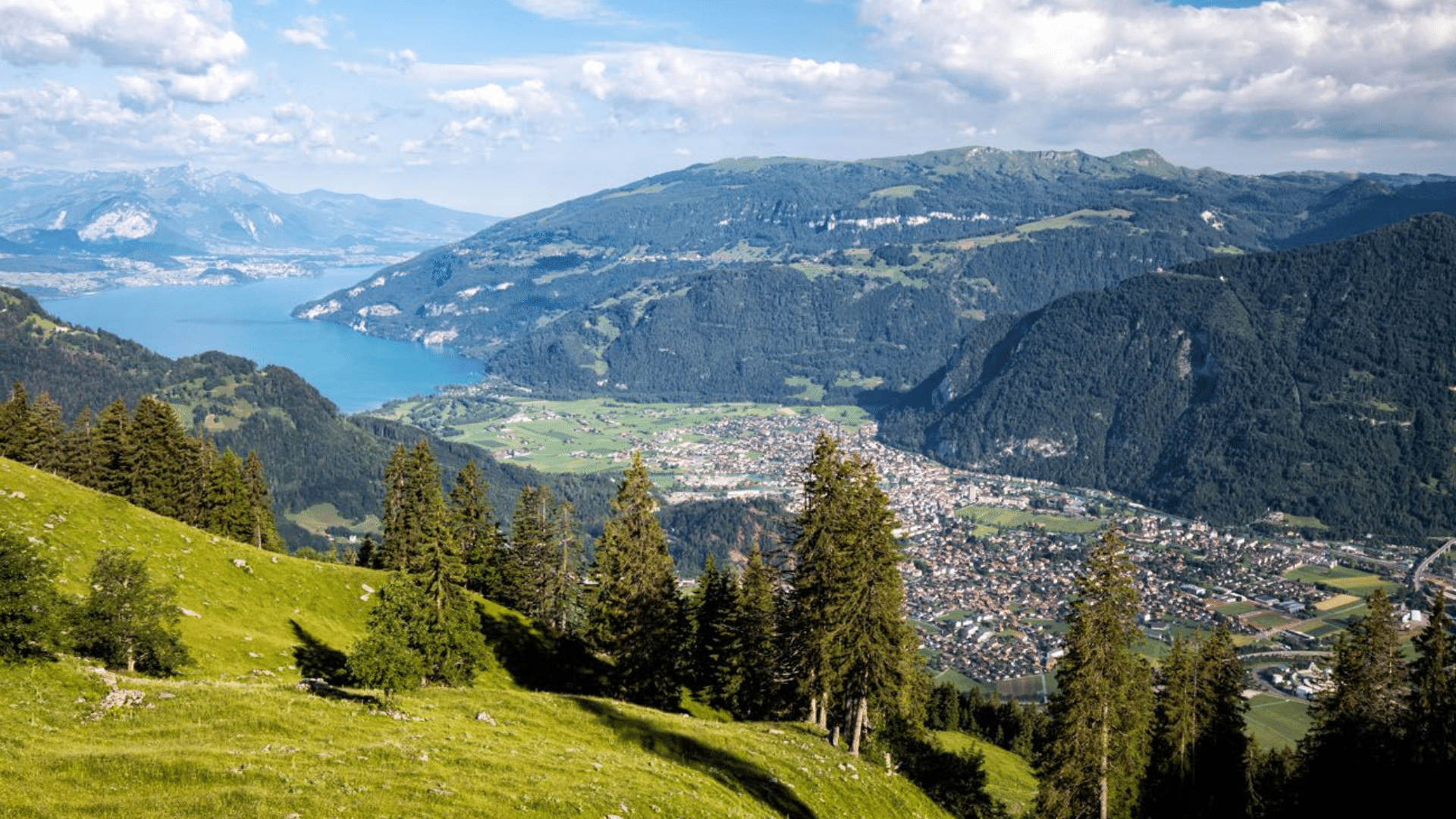
SOURCE: Earth Trekkers
Interlaken is a bustling resort town located between Lake Thun and Lake Brienz, surrounded by the majestic Eiger, Mönch, and Jungfrau mountains.
Known for its stunning scenery, Interlaken is the perfect base for exploring the Bernese Oberland. It is a hub for adventure tourism, offering a mix of outdoor activities and cultural experiences.
Best Experiences Include:
- Paragliding over the stunning landscapes of Interlaken and the lakes.
- Taking a boat ride on Lake Thun or Lake Brienz for breathtaking views.
- Visiting the Harder Kulm viewpoint for panoramic views of the town and surrounding mountains.
- Visiting the charming streets filled with Swiss boutiques and cafes.
Travel Tip:
For adventure seekers, summer (June to September) offers the best weather for outdoor activities like hiking and paragliding. Winter is also popular for skiing.
2. Lauterbrunnen
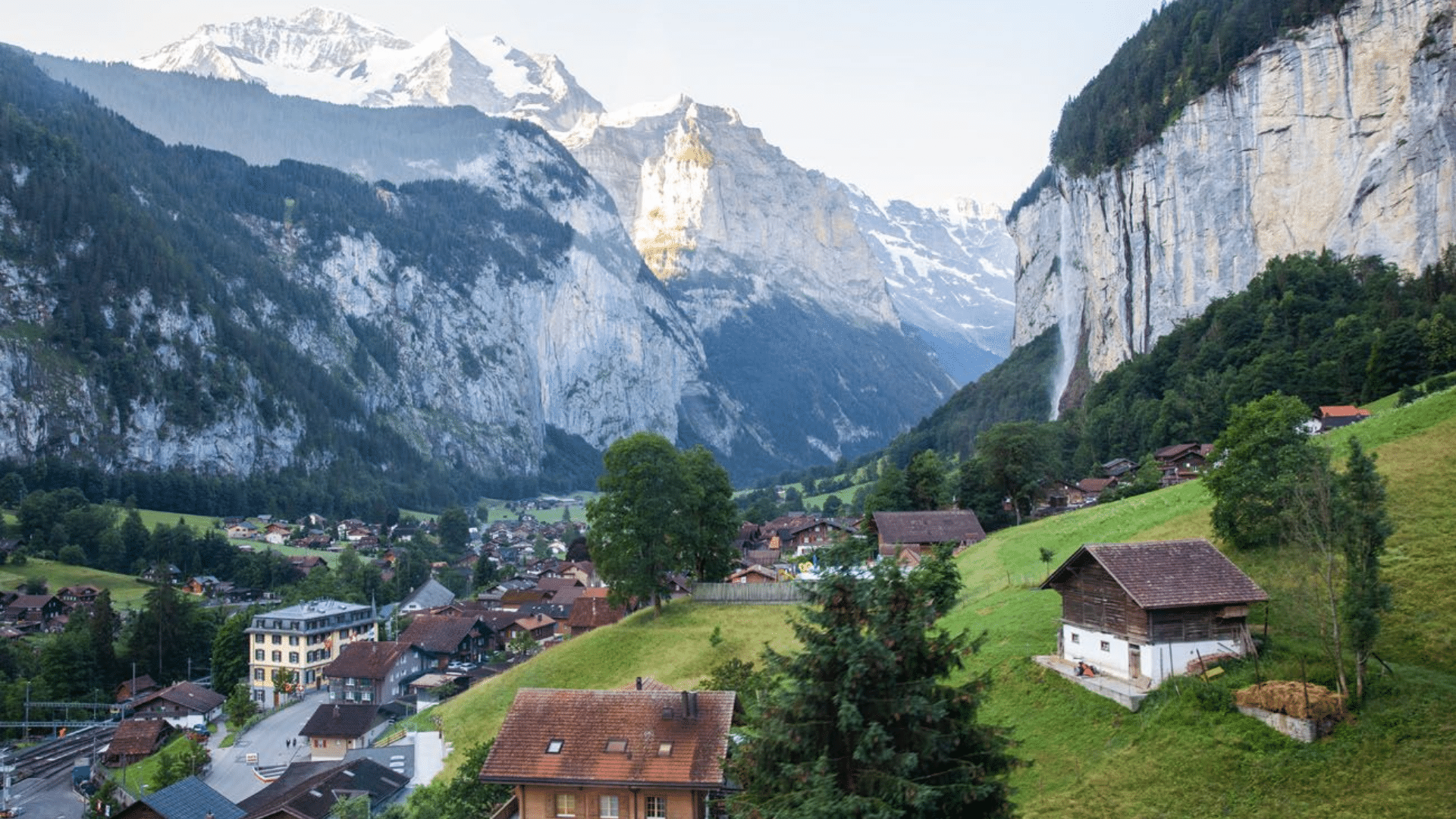
SOURCE: Earth Trekkers
Lauterbrunnen is a picturesque village nestled in a stunning valley, known for its dramatic waterfalls and proximity to the Jungfrau massif.
With 72 waterfalls, lush meadows, and towering cliffs, Lauterbrunnen is a must-see destination for nature lovers.
Best Experiences Include:
- Hiking to Trummelbach Falls, an incredible series of waterfalls inside the mountain.
- Taking the cable car to Schilthorn, famous for its James Bond movie connection.
- Walking along the valley to witness the stunning Staubbach Falls, one of Europe’s highest free-falling waterfalls.
- Checking out the quaint village with traditional Swiss chalets.
Travel Tip:
Lauterbrunnen is a great base for visiting Jungfraujoch and Grindelwald. Consider visiting in late spring or early autumn to avoid the crowds and enjoy mild weather.
3. Wengen

SOURCE: Earth Trekkers
Wengen is a car-free alpine village perched above Lauterbrunnen. It offers stunning views of the Jungfrau, Mönch, and Eiger mountains.
This tranquil village is known for its winter sports, particularly skiing, and is a hub for alpine hiking in summer.
Best Experiences Include:
- Skiing or snowboarding on the slopes during winter.
- Taking a scenic train ride on the Jungfrau Railway to Jungfraujoch.
- Hiking the Eiger Trail for incredible mountain views.
- Visiting Kleine Scheidegg, a popular mountain pass for both skiing and hiking.
Travel Tip:
Wengen is best visited during the winter for skiing, or in summer for hiking, when the weather is warmer and the trails are open.
4. Kleine Scheidegg
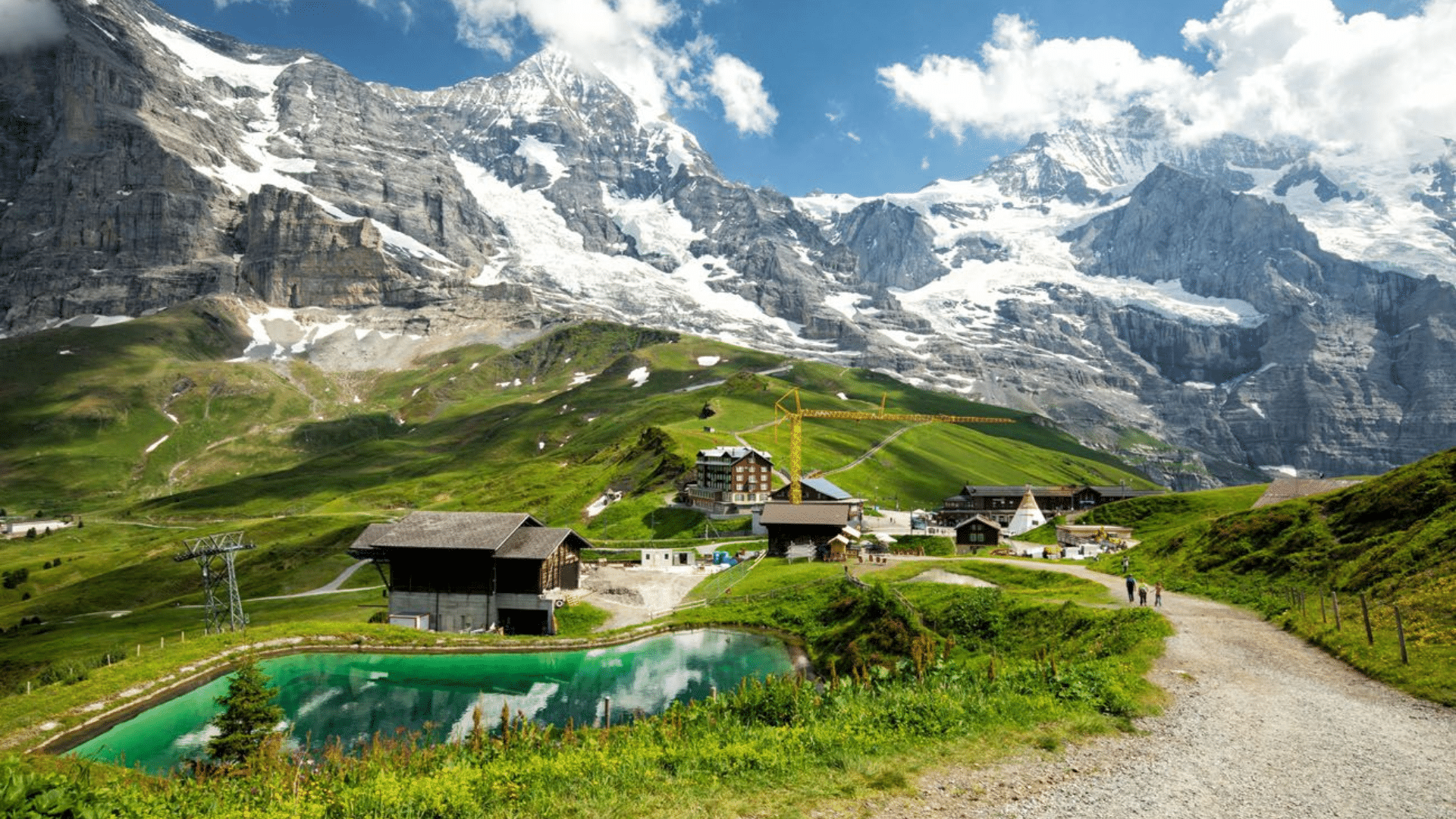
SOURCE: Earth Trekkers
Located at the base of the Eiger, Mönch, and Jungfrau mountains, Kleine Scheidegg is a popular mountain pass and a key stop on the Jungfrau Railway.
It offers stunning views of the surrounding peaks and is a hub for skiing in winter and hiking in summer.
Best Experiences Include:
- Taking the Jungfrau Railway to Jungfraujoch, the highest railway station in Europe.
- Hiking the Eiger Trail, which offers spectacular views of the Eiger North Face.
- Uncover the Kleine Scheidegg area on foot, with scenic trails suitable for all levels.
- Skiing or snowboarding on the slopes during winter.
Travel Tip:
For the best experience, visit in summer for hiking and in winter for skiing. The weather can be unpredictable in the mountains, so be prepared for changing conditions.
5. Mürren
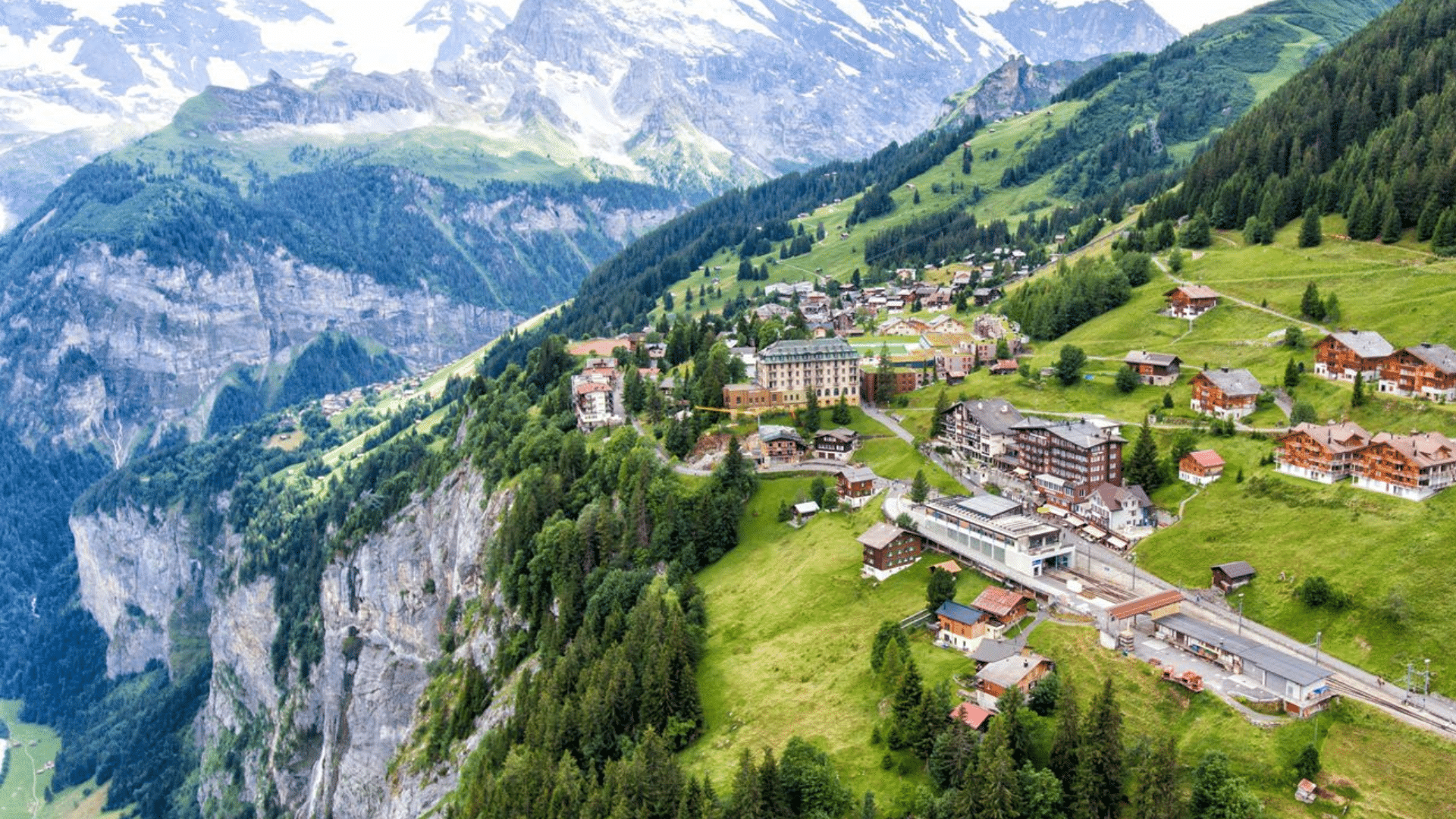
SOURCE: Earth Trekkers
Mürren is a car-free village perched above the Lauterbrunnen Valley, offering panoramic views of the Jungfrau and surrounding peaks. Known for its traditional Swiss charm, Mürren is a hub for outdoor activities, including hiking, skiing, and mountaineering.
Best Experiences Include:
- Skiing and snowboarding in the Schilthorn region.
- Hiking the North Face Trail, which provides dramatic views of the Eiger and Jungfrau.
- Taking the Piz Gloria cable car to Schilthorn, which offers stunning 360-degree views.
- Visiting the charming village and enjoying traditional Swiss food in cozy chalets.
Travel Tip:
Mürren is ideal for those seeking a quieter, less touristy experience in the Bernese Oberland. Visit in winter for skiing or in summer for hiking and spectacular mountain views.
The Bottom Line
The Bernese Oberland is a beautiful region that blends Swiss culture with the natural scenery of the Alps.
From its traditional alpine farming and festivals to its iconic mountains and clear lakes, it offers a special experience for all visitors.
People who enjoy active trips, peaceful breaks, or learning about Swiss heritage will find much to do here.
The region’s focus on protecting nature and its landscapes ensures that future generations can continue to enjoy this remarkable part of Switzerland.
With activities ranging from hiking to skiing and cultural immersion, it truly offers the best of both worlds for all kinds of thrills.

